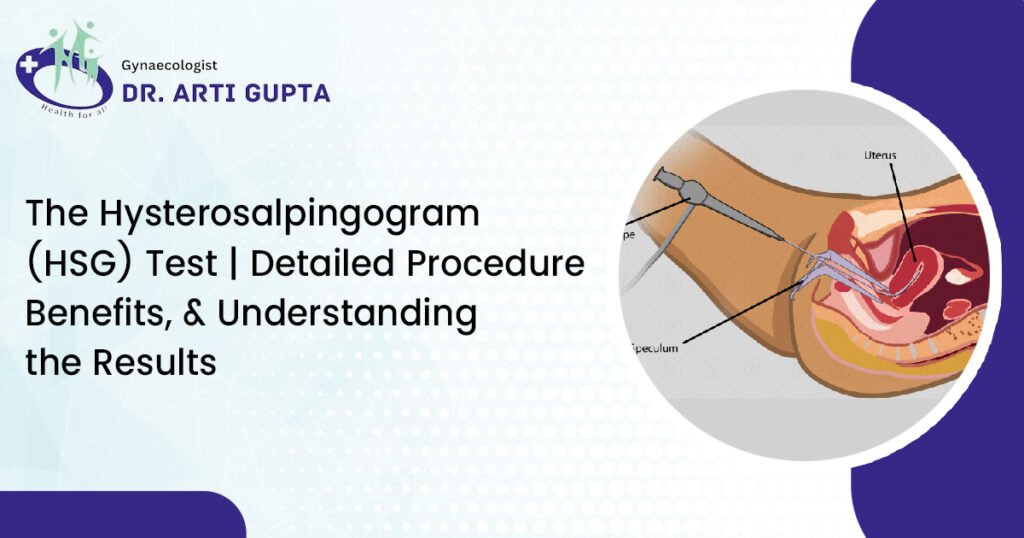The Hysterosalpingogram (HSG) test is a crucial diagnostic tool used primarily in the field of gynaecology to evaluate the shape of the uterine cavity and the patency of the fallopian tubes. This test is particularly significant for women experiencing infertility, as it helps identify potential structural issues that could impede conception. In this blog, we will explore who may need an HSG test, the detailed procedure, its benefits, and how to interpret the results, along with the cost associated with the test.
Who May Need an HSG Test?
➽ Women Experiencing Infertility
Women who have been trying to conceive for over a year without success may need an HSG test to check for blockages or abnormalities in their reproductive organs.
➽ Recurrent Miscarriages
Women who have experienced multiple miscarriages may undergo an HSG test to identify structural issues within the uterus that could be contributing to pregnancy loss.
➽ Prior Pelvic Infections
Women with a history of pelvic infections or pelvic inflammatory disease (PID) may need an HSG test to assess the impact of these conditions on the fallopian tubes and uterus.
➽ Suspected Uterine Abnormalities
Women with symptoms suggesting uterine abnormalities, such as irregular bleeding or pelvic pain, may benefit from an HSG test for a detailed evaluation.
Detailed Procedure
➽ Preparation
Before undergoing an HSG test, patients are typically advised to schedule the procedure within the first half of their menstrual cycle (usually between days 7 and 10) to avoid the possibility of being pregnant. A mild pain reliever may be recommended before the test to alleviate potential discomfort.
➽ Procedure
A) Positioning: The patient lies on an X-ray table, similar to the position for a pelvic exam.
B) Insertion of Speculum: A speculum is inserted into the vagina to visualize the cervix.
C) Cervical Cleaning: An antiseptic solution is used to clean the cervix.
D) Cannula Insertion: A thin tube (cannula) is gently inserted through the cervix into the uterine cavity.
E) Contrast Dye Injection: A contrast dye is slowly injected through the cannula into the uterus and fallopian tubes.
F) X-ray Imaging: As the dye flows through the reproductive tract, a series of X-ray images (fluoroscopy) are taken to observe the dye’s path and highlight the structure of the uterus and fallopian tubes.
G) Completion: After the images are captured, the speculum and cannula are removed. Usually, the entire process takes between fifteen and thirty minutes.
Benefits of the HSG Test
➽ Diagnosis of Blockages
The HSG test is highly effective in diagnosing blockages in the fallopian tubes, which can prevent sperm from reaching the egg or obstruct the passage of a fertilized egg to the uterus.
➽ Uterine Abnormalities
It helps identify structural abnormalities within the uterus, such as fibroids, polyps, adhesions, or congenital malformations that may impact fertility or cause recurrent miscarriages.
➽ Guided Treatment
The results of an HSG test can guide further treatment decisions, such as surgery to correct structural issues or assisted reproductive techniques like in vitro fertilization (IVF).
➽ Minimal Invasiveness
Compared to other diagnostic procedures, the HSG test is minimally invasive, involves no incisions, and is performed on an outpatient basis.
Interpreting the Results
➽ Normal Results:
Uterine Cavity: The dye outlines a normal-shaped uterine cavity without filling defects.
Fallopian Tubes: The dye spills freely from the ends of both fallopian tubes, indicating they are open and unblocked.
➽ Abnormal Results:
Tubal Blockages: The dye does not pass through one or both fallopian tubes, suggesting a blockage.
Uterine Abnormalities: The dye reveals irregularities in the uterine cavity, such as filling defects, indicating the presence of polyps, fibroids, or adhesions.
Spillage Issues: If the dye does not spill out of the tubes or spills irregularly, it may indicate partial blockages or tubal scarring.
Conclusion
The Hysterosalpingogram (HSG) test is an invaluable diagnostic tool in the assessment of female infertility, providing critical insights into the condition of the uterus and fallopian tubes. By understanding who may need the test, and the detailed procedure, benefits, and results of the HSG test, patients can approach the process with confidence and clarity.
FAQs
The HSG test is used to evaluate the shape and structure of the uterine cavity and to check if the fallopian tubes are open or blocked. It is commonly performed to investigate causes of infertility, and recurrent miscarriages, or to assess the uterine cavity before certain treatments like in vitro fertilization (IVF).
The HSG test may cause some discomfort or cramping similar to menstrual cramps. Ask your healthcare provider if the facility of doing HSG under anaesthesia is available. If yes, it will make the HSG test completely painless.
To prepare for an HSG test, schedule the procedure within the first half of your menstrual cycle (typically between days 7 and 10). Avoid using tampons, douches, or vaginal medications for at least 24 hours before the test.
The HSG test is generally safe, but there are some potential risks and side effects. These may include mild cramping, light vaginal spotting, or allergic reactions to the contrast dye.
The results of an HSG test are usually available immediately after the procedure, as the images are taken in real time.
- Our Blogs

